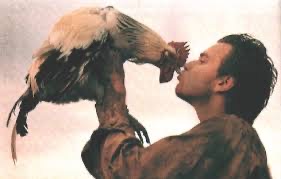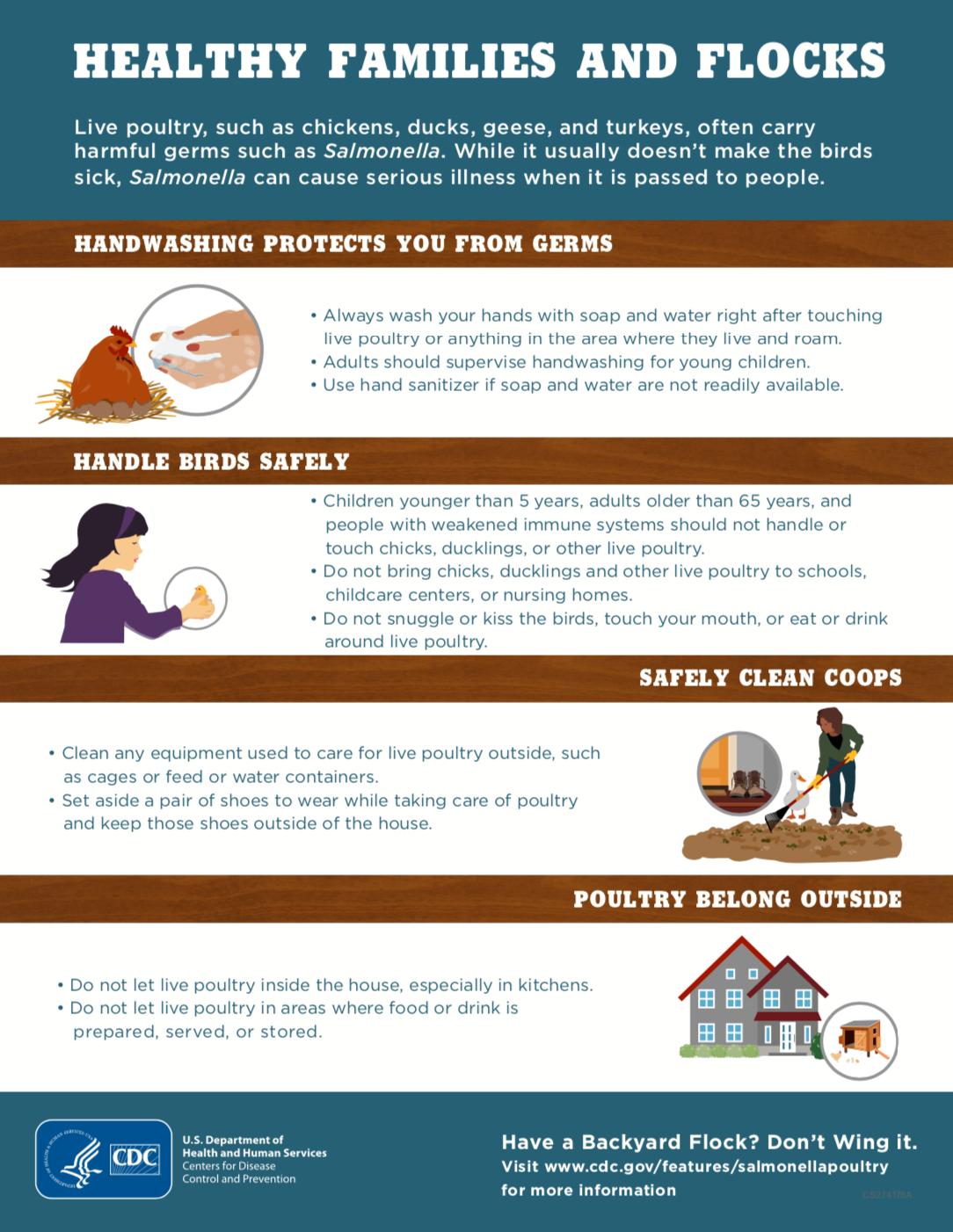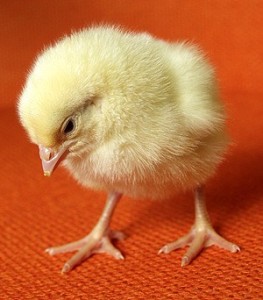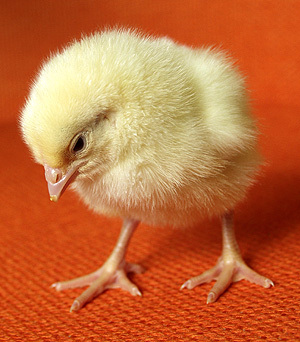Amy was with Sorenne at Target while I was getting groceries. She texted to tell me, Same as it Ever Was was playing in the store.
The song is actually titled, Once in a Lifetime.
I said I was sure it was the goal of the Talking Heads in 1981 to have their music broadcast in an Australian department store 33 years later.
 The U.S. Centers for Disease Control and Prevention is collaborating with public health, veterinary, and agriculture officials in many states and with the U.S. Department of Agriculture’s Animal and Plant Health Inspection Service (USDA-APHIS) to investigate an outbreak of human Salmonella infections linked to contact with live poultry. Public health investigators are using the PulseNet system to identify cases of illness that may be part of this outbreak. PulseNet, the national subtyping network of public health and food regulatory agency laboratories coordinated by CDC, obtains DNA “fingerprints” of Salmonella bacteria through diagnostic testing with pulsed-field gel electrophoresis, or PFGE.
The U.S. Centers for Disease Control and Prevention is collaborating with public health, veterinary, and agriculture officials in many states and with the U.S. Department of Agriculture’s Animal and Plant Health Inspection Service (USDA-APHIS) to investigate an outbreak of human Salmonella infections linked to contact with live poultry. Public health investigators are using the PulseNet system to identify cases of illness that may be part of this outbreak. PulseNet, the national subtyping network of public health and food regulatory agency laboratories coordinated by CDC, obtains DNA “fingerprints” of Salmonella bacteria through diagnostic testing with pulsed-field gel electrophoresis, or PFGE.
As of May 7, 2014, a total of 60 persons infected with the outbreak strains of Salmonella Infantis or Salmonella Newport have been reported from 23 states. The number of ill persons identified in each state is as follows: Alabama (1), Arizona (1), Arkansas (1), California (1), Colorado (2), Georgia (2), Idaho (2), Indiana (1), Kentucky (6), Maine (1), Maryland (2), New Hampshire (1), New Mexico (1), New York (6), North Carolina (3), Ohio (6), Pennsylvania (8), Tennessee (3), Utah (1), Vermont (3), Virginia (3), Washington (1), and West Virginia (4).
Among the persons who reported the date they became ill, illnesses began between and February 4, 2014 and April 21, 2014. Ill persons range in age from younger than one year to 95 years, and the median age is 29 years. Forty percent of ill persons are 10 years of age or younger. Fifty-seven percent of ill persons are male. Among 32 ill persons with available information, 10 (31%) have been hospitalized. No deaths have been reported.
 Epidemiologic and traceback investigations conducted by officials in local, state, and federal public health agencies indicate that contact with live poultry sourced from Mt. Healthy Hatcheries in Ohio is the likely source of this outbreak of Salmonella infections.
Epidemiologic and traceback investigations conducted by officials in local, state, and federal public health agencies indicate that contact with live poultry sourced from Mt. Healthy Hatcheries in Ohio is the likely source of this outbreak of Salmonella infections.
In interviews, ill persons answered questions about contact with animals and foods consumed during the week before becoming ill. Thirty-one (82%) of 38 ill persons interviewed reported contact with live poultry (e.g., chicks, chickens, ducks, ducklings) before becoming ill. Mt. Healthy Hatcheries sells birds to many different retailers. Nineteen (90%) of 21 ill persons with available purchase information reported purchasing live baby poultry from five different feed or farm store companies in multiple states. Ill persons reported purchasing live poultry for backyard flocks to produce eggs or meat, or to keep as pets.
Findings of multiple traceback investigations of live baby poultry from homes of ill persons have identified Mt. Healthy Hatcheries in Ohio as the source of chicks and ducklings. This hatchery uses multiple source flocks to obtain eggs and chicks, so it is unclear at this time where the contamination originated. This is the same mail-order hatchery that has been associated with multiple outbreaks of human Salmonella infections linked to live poultry in the past, including in 2012 and 2013. Public health, veterinary, and agriculture officials continue to work with this hatchery and have made recommendations for improvement. This hatchery is a member of the USDA National Poultry Improvement Plan, a program that is intended to eliminate certain strains of Salmonella that cause illness in poultry breeding flocks and hatcheries, but does not certify that these live poultry are free from other strains of Salmonella that may cause human illness.
Contact with live poultry can be a source of human Salmonella infections. Many ill persons in this outbreak reported bringing the live poultry into their homes, and others reported kissing or cuddling with the live poultry. These behaviors increase a person’s risk of a Salmonella infection from contact with live poultry. People can get sick even if they do not have direct contact with the live poultry, but touch items and places that have been contaminated in the poultry’s environment. Always wash hands thoroughly with soap and water right after touching live poultry or anything in the area where they live and roam. Adults should supervise hand washing for young children. These recommendations are important and apply to all live poultry regardless of the age of the birds or where they were purchased.
Mail-order hatcheries, agricultural feed stores, and others who sell or display chicks, ducklings and other live poultry should provide health-related information to owners and potential purchasers of these birds prior to the point of purchase. This should include information about the risk of acquiring a Salmonella infection from contact with live poultry.
 “Don’t kiss backyard poultry or snuggle them and then touch your face or mouth,” the CDC says. “Don’t let backyard poultry inside the house, especially in areas where food or drink is prepared, served, or stored.”
“Don’t kiss backyard poultry or snuggle them and then touch your face or mouth,” the CDC says. “Don’t let backyard poultry inside the house, especially in areas where food or drink is prepared, served, or stored.”









.jpg) chicks and ducklings to an unnamed nationwide agricultural feedstore.
chicks and ducklings to an unnamed nationwide agricultural feedstore. and ducklings to an unnamed nationwide agricultural feedstore.
and ducklings to an unnamed nationwide agricultural feedstore..jpg)